Reviews & Articles
Art Basel Week 2015
John BATTEN
at 9:25am on 23rd April 2015
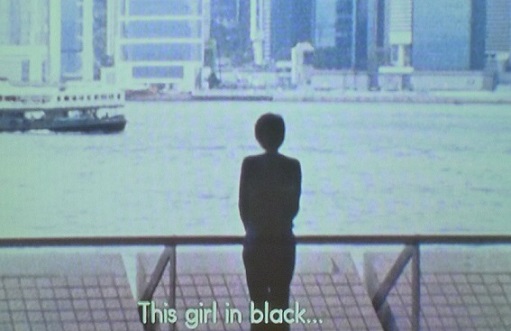
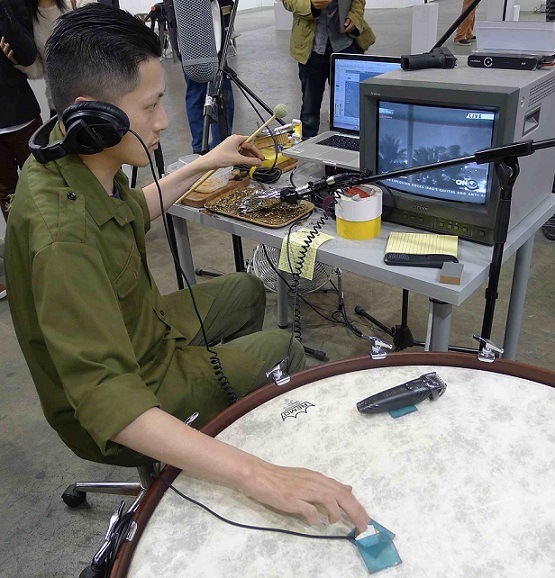
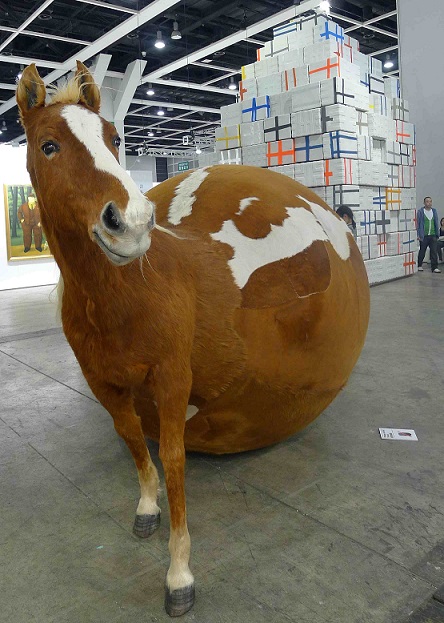
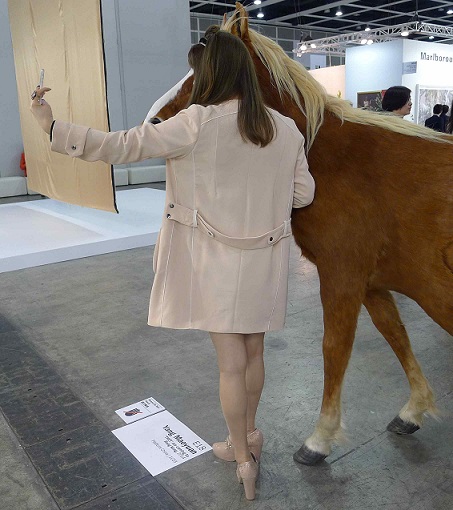
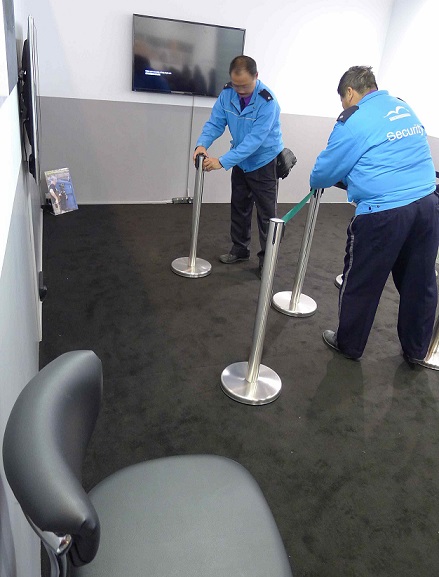
Captions:
1. Still from Dominique Gonzalez-Foerster’s Central, video, 2001.
2. Samson Young's live sound performance in a.m. space's booth at Art Basel.
3. Detail of Yang Maoyuan’s THEY are coming to Hong Kong, 2014, with Joao Vasco Paiva's Mausoleum, 2014 at rear.
4. Taking a 'selfie' with Yang Maoyuan's hybrid horse of his THEY are coming to Hong Kong installation, 2014.
5. Sarah Lai's video, painting and performance installation at Parasite.
All photographs: John Batten
(原文以英文發表,題為〈巴塞爾藝術週2015〉。)
“A story should have a beginning, a middle and an end, but not necessarily in that order,” quoted Alexie Glass-Kantor, curator of Art Basel Hong Kong’s Encounters section, of French film director Jean-Luc Godard. Art fairs are the art world’s supermarkets, and despite a utilitarian approach, the dalliance with luxury, money and ego can distort the ‘purity’ or intention of much of the exhibited art. But, Godard reminds us, nothing is necessarily conventional – even art fairs.
There was something for everyone in the recent week of fairs and art events spread across Hong Kong. The cynical found time to bemoan the offerings, but within the art market’s wheels of frantic activity any art lover could find pockets of enjoyment. Somewhere in the middle it gets hazy: the art market does not necessarily filter the best art to the ‘top’ and in a marketing fog of accolades much can be confusing, mediocre or banal.
Trying to rationalise the week, Hong Kong lighting artist Wong Siu-yung commented that an art fair is as if, “Someone kills lots of animals, rips off their skins, then prices the skins expensively and exhibits them in a trade fair. Those animals could have just lived happily and freely in the wilderness and we could be happy to see them once in a while.” Art fairs will continue to be popular, but a healthy art scene needs the balance of serious, non-commercial venues of museums, contemporary art spaces and, along the exhibition spectrum, artist-run spaces. All these spaces offer a “wilderness”, a purer place for art, ostensibly outside the art market. Importantly, they can be experimental, controversial and unsettling places for viewers, and offer time for contemplation of aesthetic beauty.
It is this balance that Hong Kong’s currently lacks – we have an active art market, but few museums and no artist-run spaces to give a critical and alternative art commentary. Hong Kong’s art agenda should not be set by art fairs or the seasonal art auctions. A greater diversity of art exhibitions, events and venues is needed and needed throughout the year. Art Basel’s energy is positive for Hong Kong, however, the onus is on Hong Kong artists and art organisations to conscientiously assert stronger identities, not just linger on Art Basel’s coattails to build an audience. The Fotan open studios, successfully held yearly in January, changed dates to coincide with this year’s Art Basel. Not only do they lose their previous strong identity, but now compete with similar open days in Wong Chuk Hang, Chai Wan, Wan Chai and a slew of other art activities.
In contrast, West Kowloon Cultural District’s museum M+ got their timing right. M+ needs to build a public audience during the construction of its museum and network with the art world, so timing its own exhibition events with Art Basel is obvious. The current Moving Images exhibitions of films and artist videos from around the world, runs in Causeway Bay and at The Cattle Depot in To Kwan Wan until 26 April. This inaugural exhibition unveils the genesis of the museum’s new film collection - and is potentially groundbreaking, as it augments the work of the Hong Kong Film Archive and reinforces Hong Kong’s major contribution to cinema innovation and popularity. There are few equivalent art film and artist video collections in Asia.
On show is French artist Dominique Gonzalez-Foerster’s Central (2001), which captures a narrative appropriately played out in Hong Kong, a cross-road for refugees, boat-jumpers and hopes: a man waits on the Tsim Sha Tsui waterfront to meet his brother for the first time in six months, and whom he may never see again. The narrator gives a poignant soliloquy, discussing friendship and relationships, while the camera scans other people, whose own lives loiter on the harbour promenade. Also showing is Hong Kong-born Paul Chan, who has built an exemplary art career in New York and his 2nd Light is in a series of seven digital animation films using his usual combination of light and shadow to depict an unnerving tension between quiet good and dark evil.
This year, even more luxury brand marketing sidled alongside Art Basel, piggybacking the fair’s timing and image. The Peninsula Hotel sponsored leading British artist Richard Wilson’s bus sculpture Hang On a Minute Lads… I’ve Got a Great Idea (using the film The Italian Job as inspiration), which hangs over the hotel’s façade (until 8 April). Social media immediately saw a visual similarity with the bus involved in the 2010 Manila hostage crisis, some comments calling the installation “insensitive”; it is a reminder that artistic imagery has uncontrolled associations. Such art events are better spread throughout the year. This would add to Hong Kong’s art diversity and continue to allow marketing opportunities for sponsors. In an overloaded art week, any marketing message was diluted and appeared to commoditize the art.
Art Central took the overflow of galleries wishing to exhibit at a fair in Hong Kong. Hong Kong artist Vivian Poon’s installation of abstracted notebook pages at the Mur Nomade booth was a rare exhibition-quality display. However, such art fairs with a standard layout, organization and marketing rationale merely expand until saturated by willing gallery exhibitors. Surely, it is better for viewers and collectors to visit galleries throughout the year to see art in a considered, sensitive gallery environment?
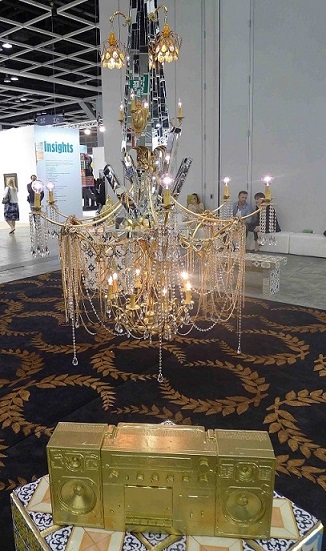
Detail of American Carlos Rolón’s Around the Way, 2013, installation.
Art Basel’s Encounters section exhibit large installation pieces selected from proposals by participating galleries. Strategically located at the fair’s meridian points and as a “city within a city” inside the fair, these pieces were visually stronger than 2014, but many relied on size to make an impact. The best included American Carlos Rolón’s Around the Way (2013), an installation drawing on vernacular responses to middle-class aspirations and decoration. Rolón’s oversize chandelier, tiles, boom box and golden objects have been re-imagined from the artist’s Chicago-Puerto Rican childhood home; ironically, it reflects the self-same art fair allusions of luxury.
Similarly, the bloated, hybrid animals of Yang Maoyuan’s THEY are coming to Hong Kong (2014) displays the artist’s view of luxury consumerism. And, like the thrill to ‘buy, buy, buy’, these grotesque animals are seductively attractive and abhorrent. Taking a selfie with them is now part of the consumerist package!
The highlights in the gallery booths from Asia at Art Basel included Mark Justiniani (The Drawing Room), Trevor Yeung (Blindspot Gallery), Samson Young (a.m. space), Jon Campbell (Darren Knight Gallery), Lui Chun Kwong (Gallery Exit), Sarah Lai Cheuk Wah (Parasite installation), Saira Wasim (Gandhara-Art), Bagus Pandega (ROH Projects), Myeongbeom Kim (Gallery IHN), Nilo Ilarde (Artinformal), Hajra Waheed (Experimenter), and Poklong Anading (1335 Mabini).
Ultimately, amongst the parties, dinners, coffee and champagne, the art week’s events are a great networking opportunity to meet new contacts and catch-up with old. M+ is Hong Kong’s first outward looking art institution and has quickly asserted its presence with equivalent institutions around the world and is a known buyer of contemporary art. Art people naturally want to meet the M+ curators.
On view in Moving Images is influential South African artist William Kentridge’s Felix in Exile (1994). Kentridge has a large travelling exhibition touring Asia next year. These travelling shows are often co-ordinated by an artists’ gallery. Kentridge’s representative is Goodman Gallery from Johannesburg; that also presented at Art Basel. The tour’s timing and M+ not yet having its own venue may preclude Hong Kong seeing the exhibition this time round. But, discussions continue. Hong Kong is now firmly ‘linked’ into the art world. That is a remarkable turnaround for Hong Kong’s art scene. Now, let’s build up the diversity.
A version of this review was published in the South China Morning Post, 26 March 2015.
